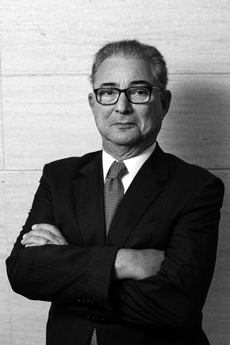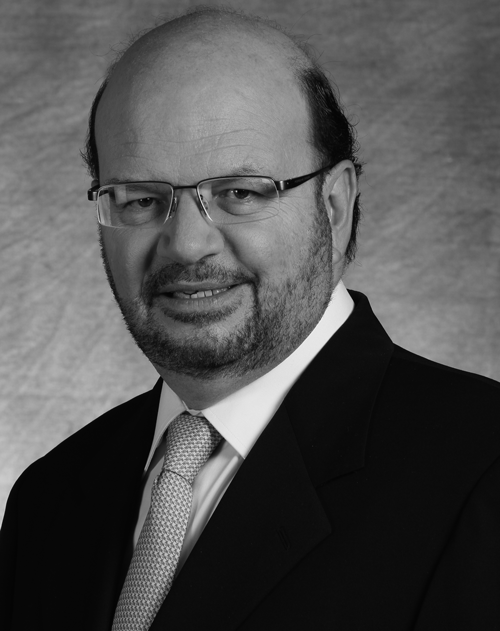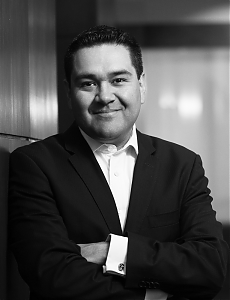TTR Dealmaker Q&A
July, 2015
Telefónica acquires GVT from Vivendi
Moshe Sendacz
Machado, Meyer, Sendacz e Opice Advogados
Q: Why was your firm selected to act on behalf of Telefónica in this transaction?
A: It was a natural selection because we have been assisting the Telefónica Group since the privatization of Telebras in 1996-1997. We’ve been assisting Telefónica in all the transactions it carries out in Brazil, including when it competed for GVT and lost to Vivendi in 2009.
Q: What expertise did Machado, Meyer, Sendacz e Opice bring to the table?
A: The deal required expertise in various areas, with one of the most challenging being regulatory. Our capital markets practice played an important role in a follow-on issuance involved in the GVT deal in the amount of USD 5bn in shares, which was entirely subscribed. This was an overwhelming success at a difficult time in Brazil’s capital market. It was a very complex deal for the firm’s M&A practice, as Vivendi received part of the purchase price in cash, and part in shares of Telefônica Brasil through the merger of GVT’s shares into Telefônica Brasil; a portion of Telefônica Brasil shares thus received by Vivendi were subsequently exchanged by Vivendi with Telefónica for shares held by Telefónica in Telecom Italia, thus allowing Telefónica to begin exiting its investment in Telecom Italia and its indirect ownership in TIM Brasil. Our tax team also played an important role in solving, in an efficient manner, several tax issues faced in all aspects of the deal. The simultaneous closing in São Paulo, Paris, Milan and Madrid contributed to the complexity of the deal.
“It was a very complex deal for the firm’s M&A practice, as Vivendi received part of the purchase price in cash, and part in shares of Telefônica Brasil through the merger of GVT’s shares into Telefônica Brasil”
Q: What concerns did the regulators raise?
A: The Brazilian regulators forced Telefónica to exit its stake in Telecom Italia because of the condition barring it from indirectly holding shares in two competing operators in Brazil, namely Telecom Italia’s subsidiary TIM Brasil, the country’s number two player in mobile with 27.1% market share, and Telefônica Brasil, the market leader with 28.5% market share in mobile services. The Brazilian regulators were also concerned about that portion of the deal that would result in Vivendi receiving, as part of the GVT purchase price, shares of Telefônica Brasil, thus becoming a direct shareholder in Telefônica Brasil and an indirect shareholder in TIM Brasil as a result of the swap of shares between Telefónica and Vivendi. These two main issues required a complex negotiation with Brazilian antitrust authorities and telecom regulator, Anatel.
Q: How long did the negotiations with regulators take to conclude?
A: We started to approach the local authorities immediately after the execution of the SPA in September, 2014, and before making any required filings. Negotiations with the regulators commenced in October, 2014 and concluded in March, 2015.
Q: Telefónica had been the expected buyer of GVT in 2009. What went wrong then?
A: The seller decided to accept Vivendi’s offer for the controlling shares, and Telefónica gave up on the public tender offer it had launched to acquire GVT. In 2014 Vivendi manifested its desire to exit Brazil and Telefónica decided to present an offer for GVT. Vivendi also received an offer from Telecom Italia for the same asset. Telefónica’s offer conditions were much more attractive, and Vivendi decided to proceed with Telefónica. The purchase agreement was negotiated in record time in just two weeks: one week in São Paulo and one week in Paris, concluding with the signing on 18 September, 2014.
“The purchase agreement was negotiated in record time in just two weeks: one week in São Paulo and one week in Paris”
Q: What prompted Vivendi to sell GVT?
A: Telecom is a very capital-intensive business; it needs investment all the time. Vivendi was small relative to other players in the market to compete effectively and the company required more capital to grow the business.
Q: Apart from being extremely profitable, what made this asset so attractive for Telefónica?
A: It would complement geographically and also GVT is very strong in broadband. It has a very attractive fiber network and a strong presence in the corporate market.
Q: Why is GVT so profitable?
A: It was very well structured and managed by its CEO, Amos Genish, one of the founding shareholders of GVT. He’s now the top telecom guy in Brazil and has accepted the position of CEO at Telefônica Brasil. He is the leading executive at Telefónica Group in the country, which GVT is now part of.
Q: How was a multiple of 14.86x on 2013 EBITDA arrived at?
A: The telecom market is undergoing consolidation in Brazil. GVT was at the point where it would start to lose market share, but it represented synergies for the buyer. It was one of the few assets in play in a consolidated market; there’s a price in that. There was virtually no geographical overlap. The regulatory issue was in the crossed ownership of Telefónica and Telecom Italia and Vivendi and Telefônica Brasil. The antitrust and telecom authorities approved the merger of operations with no relevant objections, and more importantly, the price paid by Telefônica Brasil to Vivendi was supported by appraisals and opinions prepared by investment banks by using criteria typically adopted in deals of this nature.
Q: What does this transaction represent for the telecom sector in Brazil?
A: Telefônica has now improved its offering mainly in Internet and data services thanks to GVT’s strong fiber network. It’s a strong and solid company. It was already the largest telecom operator in Brasil. GVT was not a competitor. In fact, one of the issues raised during the negotiations with the regulatory authorities was that it could become a good competitor, because it was growing, but it was not the intent of Vivendi to invest heavily to realize that growth, so essentially the competitive landscape remains the same after the deal. The telecom market is dominated by Telefônica, TIM Brasil, Claro and Oi, which together control around 95% of the market. I believe there is no room for more operators. The transaction won’t impact pricing for consumers, but Telefônica can now compete in areas where it was not a major player previously.
Q: What made this transaction unique among deals your firm has advised on?
A: First, for the consideration involved. This was the biggest M&A transaction in Brazil, in terms of price, of the past 35 years. Secondly, owing to the complexity of the transaction, it was important for the firm to be involved. It was very important for the firm to strengthen its professional relationship with Telefónica and build on the confidence the country’s largest telecom has in us so that we can continue assisting the company in the years ahead.
“This was the biggest M&A transaction in Brazil, in terms of price, of the past 35 years”
Q: How did the firm celebrate the closing?
A: With a lot of Champagne. Simultaneous parties were held to celebrate at Telefónica’s country headquarters in Madrid and here in São Paulo.






